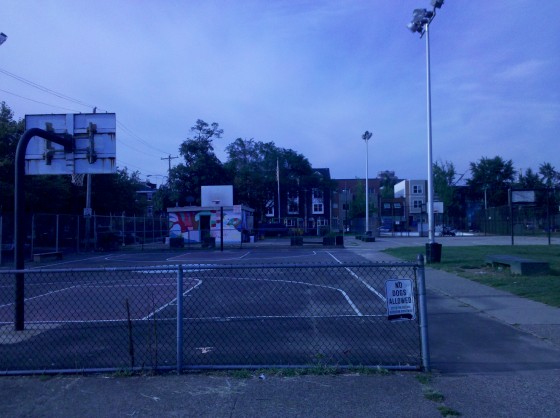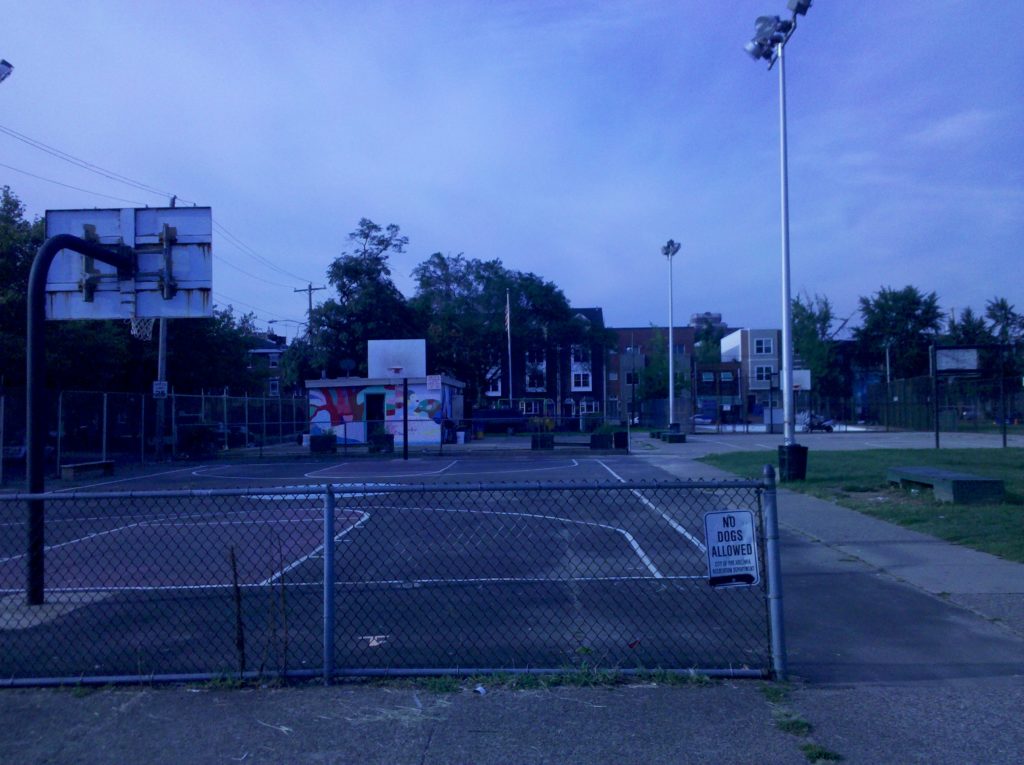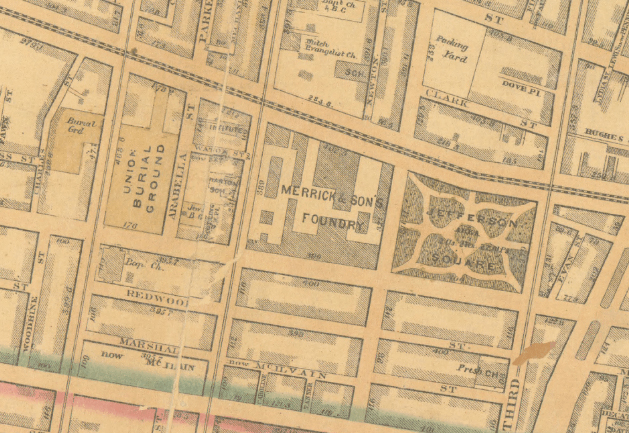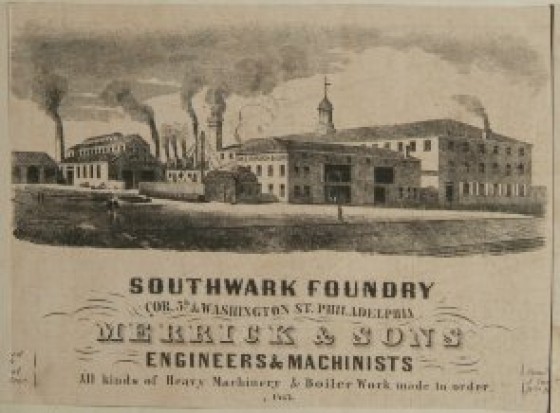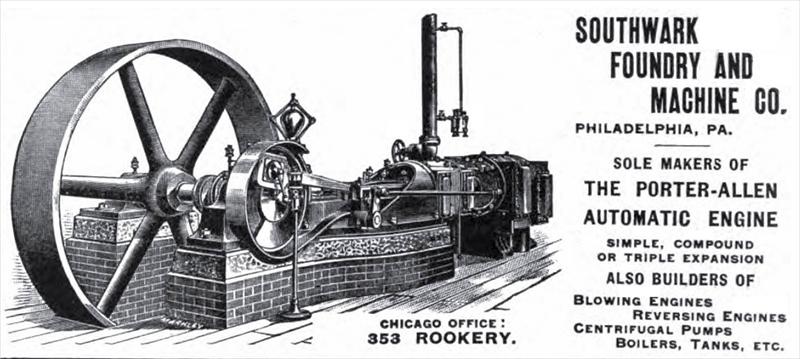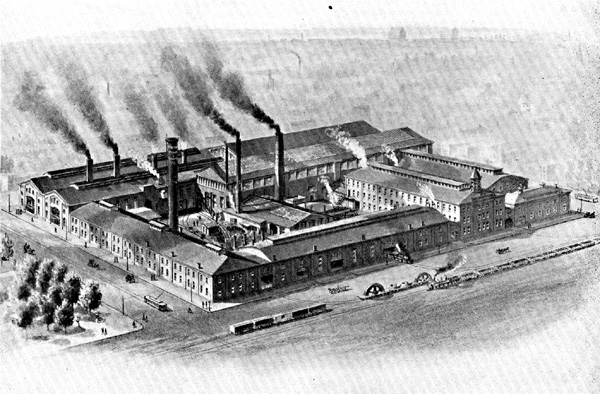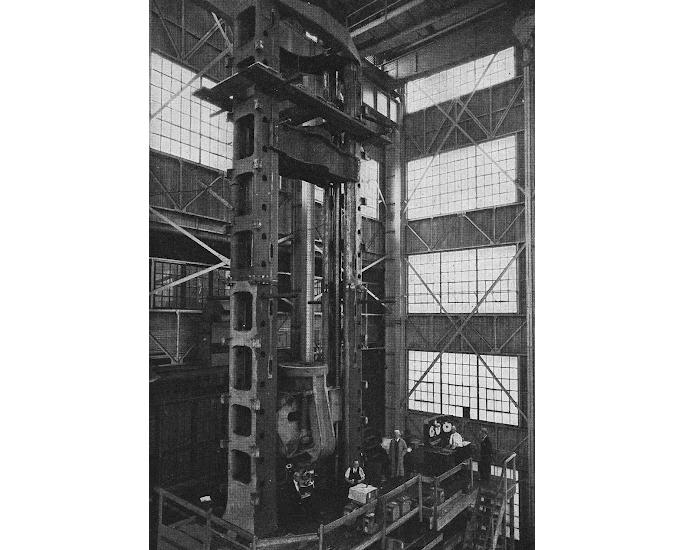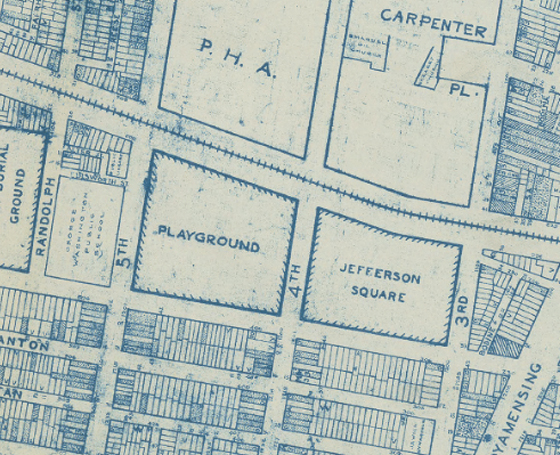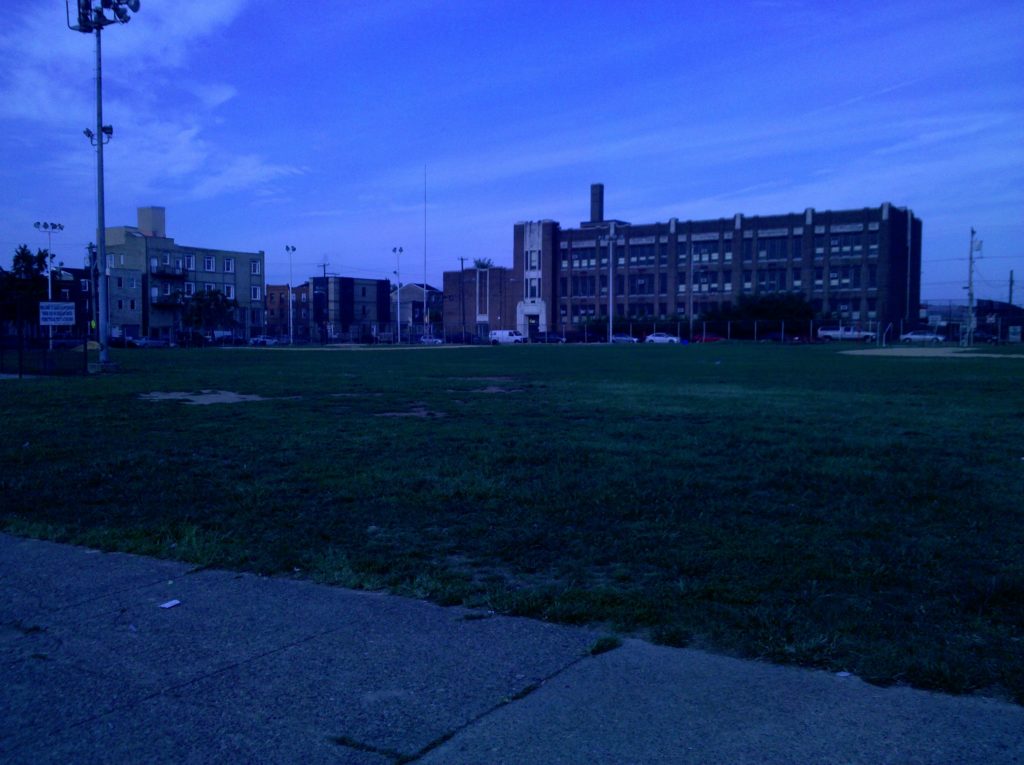During the 1960s, Philadelphia saw a host of reclamation projects dedicated to transforming industrial decay into recreational space . . . which it would then, over the course of a few decades, allow to turn into recreational decay. The oft-used but lackluster facilities at the Sacks Recreation Center & Playground are a perfect demonstration of this cycle.
In 1836, the future site of swim lessons and pickup basketball games struck industrialist Samuel Vaughan Merrick as a great place for the Southwark Iron Foundry. The complex, fronted by Washington Ave. and contained by Federal, 4th and 5th Streets, is shown here below in an image taken from Samuel L. Smedley’s 1862 Philadelphia Atlas.
The Foundry quickly became among the largest and most productive in the nation. The caption to the 1856 newspaper ad shown here and taken from Philaplace.org boasts “all kinds of Heavy Machinery & Boiler Work made to order.”
The Foundry would become an important fixture in the primordial South Philly neighborhood burgeoning with new immigrant arrivals. Factory workers helped to produce an array of iron-based commercial goods including, according to Vintage Machine, “boilers, bells and brass castings, iron boats, marine engines and boilers, sugar mill and hoisting machinery, and gas works machinery. In 1867, oscillating steam engines ‘having slide valves worked by eccentric’ were offered.” Perhaps unable to top the excitement of slide valves, the Foundry lapsed into inactivity for five years before merging with Porter-Allen Engine Co. in 1880. Incorporating as the Southwark Foundry & Machine Co., the company began pushing its Automatic Engine in Simple, Compound or Triple Expansion variations. Since we’re not experts on early engine design, we can only assume this refers to cup-holder fittings. No such fittings are visible in the image below, taken from an 1892 advertisement in the American Machinist.
Below, the Machine Company is seen in full-flower in a 1900 illustration from King’s Views of Philadelphia.
The Machine Company was eventually acquired by the Baldwin-Locomotive Company and renamed the Baldwin-Southwark Corporation. Below, a 1936 photo taken from the Progress is Fine blog shows the Baldwin steel-testing machine, declared here to be the largest in the world at over five stories high.
This would also represent the height of accomplishment for the company. Based on records maintained by the Smithsonian Institute, the Foundry appears to have ceased operations in 1945. The dormant smokestacks and vacant buildings were deemed unsafe for play and therefore removed. As shown in the image below, taken from the 1962 Works Progress Administration’s Land Use Map, Sacks Playground would replace the machine company with grass fields, basketball courts and a public swimming pool.
Today, Sacks is also a popular destination for soccer players as well as a fairgrounds for many of the Mexican cultural heritage events that take place in the neighborhood.
–David Tomar

